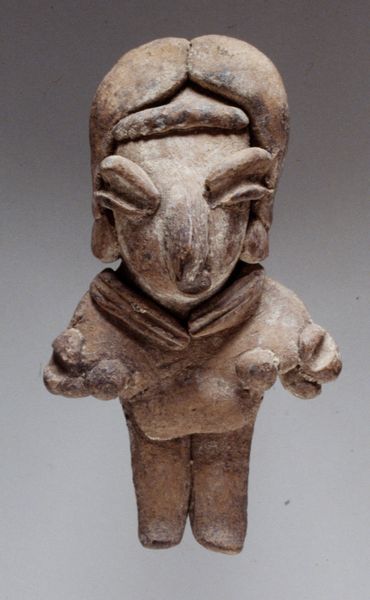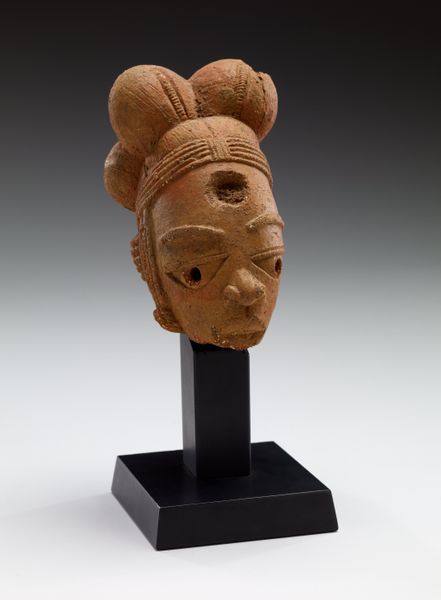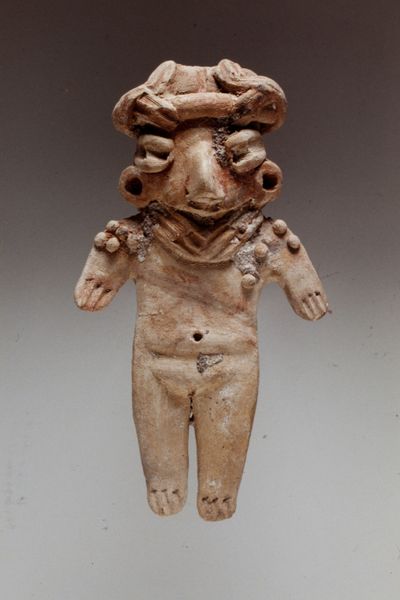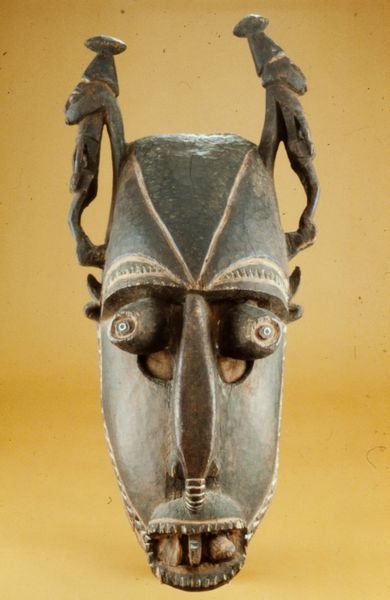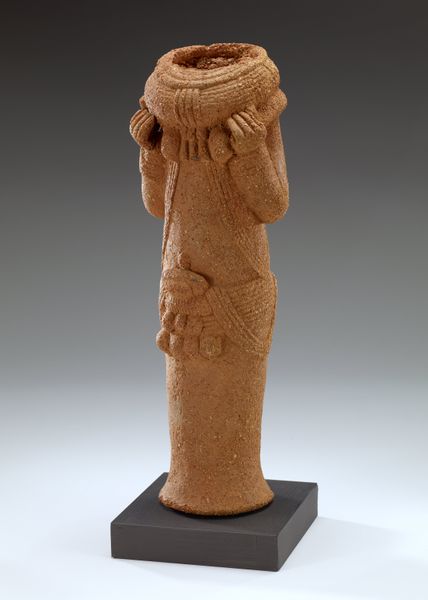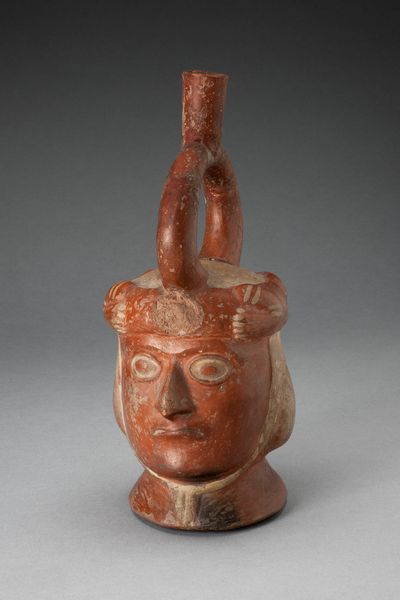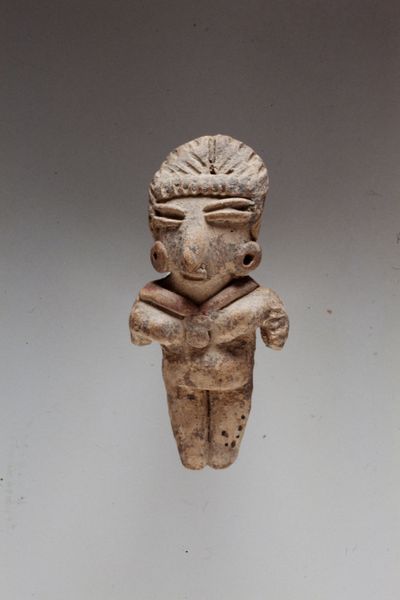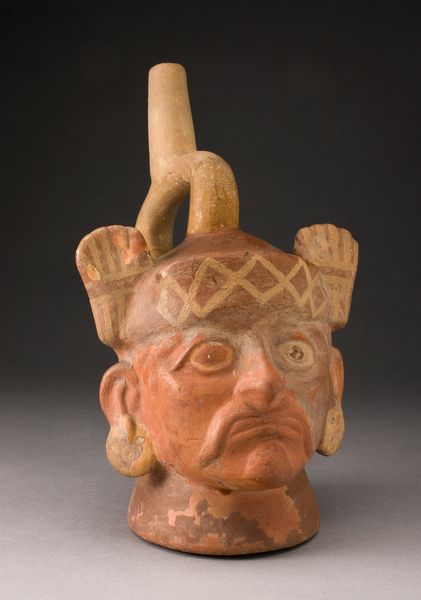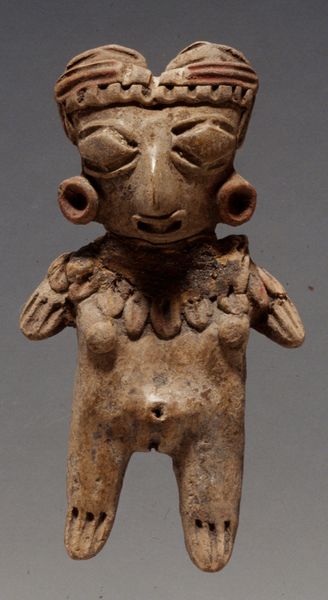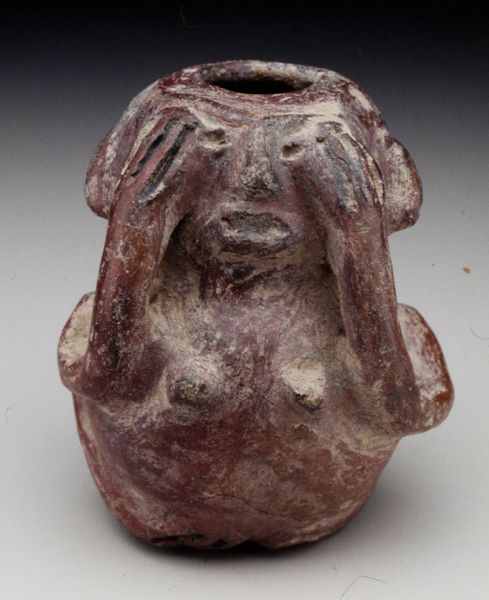
ceramic, sculpture
#
portrait
#
african-art
#
sculpture
#
ceramic
#
figuration
#
sculpture
Dimensions: 4 1/2 x 3 1/4 x 4 1/2 in. (11.43 x 8.26 x 11.43 cm)
Copyright: Public Domain
Editor: This ceramic piece, titled "Pipe in the form of a human head," dates back to the 20th century and was created by the Bamum people. It's currently housed at the Minneapolis Institute of Art. I am immediately struck by its symmetrical design and the peculiar expression conveyed by the artist. What do you see when you examine it closely? Curator: The work exemplifies the African sculptural tradition, with a particular emphasis on form and texture. Consider the repeated spherical shapes creating a crown and a series of similar textures framing the sides. How does this repeated element strike you, and what compositional qualities does it affect? Editor: The repetitions, particularly in the concentric circles used for the eyes, feel like they’re pushing the boundaries between realism and stylized representation. I see these repeated shapes in other forms of Bamum art. Curator: Precisely! This pattern highlights the Bamum's mastery of form and balance. Notice how the texture contrasts with the smoother areas around the forehead and cheeks, guiding the viewer’s eye across the composition. This directs our view and calls attention to formal considerations like balance, line, color, and shape. Does this distribution of textures suggest any relationship to light and shadow, considering how the piece would originally have been displayed? Editor: Yes, the way the light falls accentuates the curves and contours, creating a sense of depth. Now, looking closer, I can better appreciate the craftsman's artistry, who made this artwork and what tools they used, without overlooking the other design features. Curator: Indeed. Through its form and the articulation of texture, this 'Pipe in the form of a Human Head' showcases a sophisticated understanding of visual language.
Comments
No comments
Be the first to comment and join the conversation on the ultimate creative platform.


